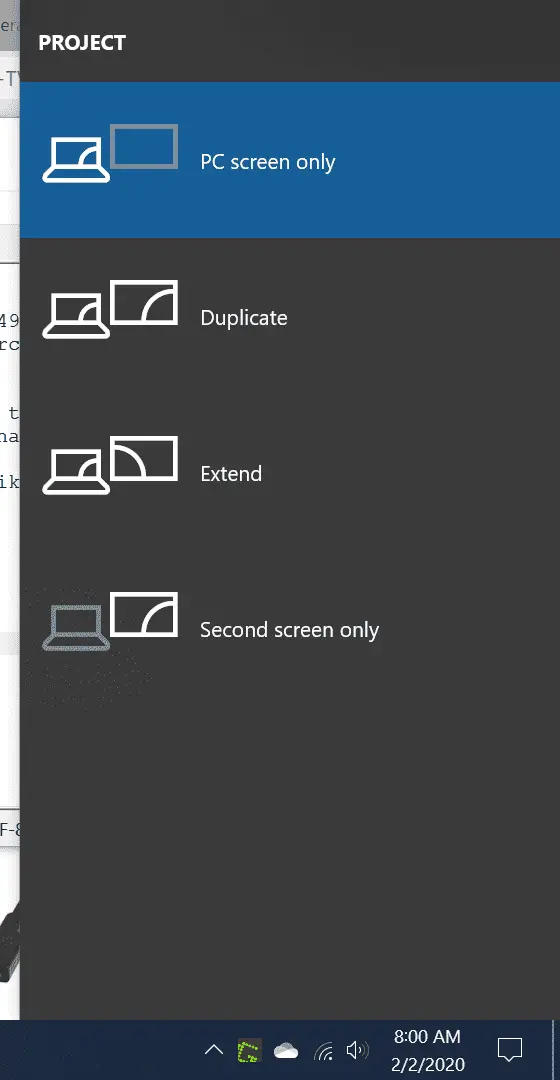

You will see the host computer you previously turned on “Projecting to this PC” listed on the list. Then, on your main computer, press Win+P to bring out the Project sidebar, click Connect to a wireless display. Open Settings, go to System > Projecting to this PC and select either “ Available everywhere on secure networks” or “ Available everywhere” from the drop-down list. ipconfig /all How to use Projecting to this PCįirst, turn on Projecting to this PC on the computer (the host) you want to use its screen as your second monitor. If you see a wireless adapter with the description of “ Microsoft Wi-Fi Direct Virtual Adapter“, your Wi-Fi adapter is also Miracast-ready. Now, run this old-school command line in a Command Prompt window.

If it says WDDM 1.3 or above like below, the display adapter is Miracast-ready. When the tool opens, go to the Display tab and check the Driver Model. To check if your display adapter supports WDDM 1.3 and above, click Start menu, type dxdiag into the search box and select dxdiag from the search result. To get Miracast to work, you basically need two things, a display adapter that supports Windows Display Driver Model (WDDM) 1.3 and above and a Wi-Fi adapter that supports Wi-Fi Direct. That being said, in order to make Projecting to this PC to work, you will need both computers’ hardware that supports Miracast. For example, if you have two Miracast supported computers, you can use Computer A as your main computer and link Computer B’s screen via Wireless Display technology as your second monitor. How to Enable TPM 2.0 on Gigabyte Motherboards - AMD and Intel / Install Windows 11 RequirementsĮnable TPM 2.In a nutshell, Projecting to this PC is a feature that lets you wirelessly connect to another computer’s monitor and use it as your second monitor. How to activate the TPM 2.0 module in the BIOS on your AMD CPU for Windows 11 How to enable Intel PTT to complete TPM 2.0 requirement by Windows 11 The option to enable the TPM may be labeled Security Device, Security Device Support, TPM State, AMD fTPM switch, AMD PSP fTPM, Intel PTT, or Intel Platform Trust Technology.Windows 11 and TPM 2.0 Explained (How to Enable TPM / PTT on your PC) These settings are sometimes contained in a sub-menu in the UEFI BIOS labeled Advanced, Security, or Trusted Computing. You can access these settings by choosing: Settings Update & Security Recovery Restart now.įrom the next screen, choose Troubleshoot Advanced options UEFI Firmware Settings Restart to make the changes.

If you need to enable TPM, these settings are managed via the UEFI BIOS (PC firmware) and vary based on your device. TPM 2.0 is used in Windows 11 for a number of features, including Windows Hello for identity protection and BitLocker for data protection. TPM 2.0 is required to run Windows 11, as an important building block for security-related features.


 0 kommentar(er)
0 kommentar(er)
